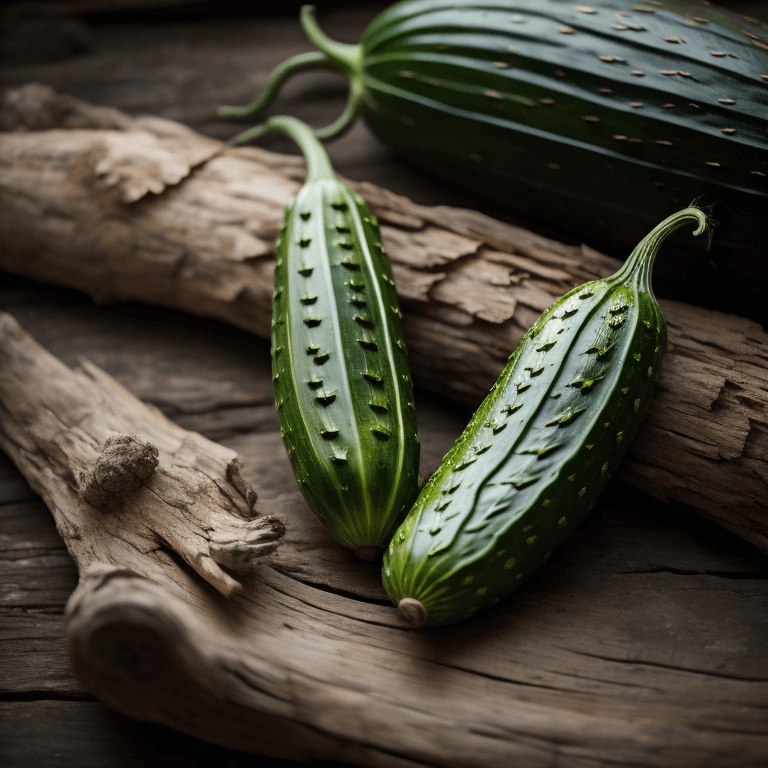The causes of white spots on cucumber leaves and how to treat them.
Do you see white spots on cucumber leaves? If so, don’t worry – you’re not alone! This is a common problem that many gardeners experience.
The white spots on cucumber leaves are probably caused by a fungal infection.

Explain it to a child
The white marks are most likely caused by a fungal infection called powdery mildew. Powdery mildew loves warm and dry environments, and usually affects young seedlings that have been actively growing and producing new leaves.
Cucumber plants are susceptible to several types of fungi, including Alternaria alternata, Colletotrichum orbiculare, and Fusarium oxysporum. These fungi can cause leaf spots, fruit rot, and stem lesions.
What are the white spots on cucumber leaves?
Cucumbers are a popular and versatile vegetable, whether eaten raw or pickled.
But when growing cucumbers, it’s not uncommon to find white spots appear on the leaves of the plant.
It’s natural to worry if these white spots indicate a problem with the cucumber, but there is no need for concern – this is an indication of powdery mildew, which is a very common fungal infection in plants.
Powdery mildew forms a dusty coating on leaves, stems, and occasionally the fruit itself.
It is most common in damp conditions and warm temperatures, which makes it particularly prevalent during the summer months.
Although it doesn’t usually cause serious harm to the cucumber plant, it can cause stunted growth or reduced yield if left unchecked.

Thankfully there are several steps you can take to reduce the risk of powdery mildew: ensuring there is adequate spacing between plants; encouraging airflow; avoiding overhead watering; and providing enough sun exposure to keep plants as dry as possible.
Though many gardeners might initially be alarmed by seeing white spots on their cucumber leaves, this should be seen simply as an indication that action needs to be taken in order to maintain healthy plants and a good crop.
Why are there white spots on my cucumber leaves?
The white marks are likely due to a fungal infection known as powdery mildew.

- It thrives in warm, dry environments, and typically affects young seedlings that have been actively growing and producing new leaves.
- The fungus appears as circular or elongated patches of white growth across the leaves.
- While it won’t kill your plant, it can stunt its development by consuming nutrients from the leaf and preventing photosynthesis from occurring.
To curb fungal infections, be sure to enjoy regularly removing dead or discolored leaves and watch out for crowding in the planting area, which contributes to humidity and increases the likelihood of an infection.
For more serious cases, consider treating your plants with fungicides like neem oil at regular intervals.
With these tips, you should be able to get rid of your cucumbers’ pesky white spots in no time!
How to treat white spots on cucumber leaves

To effectively treat white spots on cucumber leaves, a garden must first determine the underlying cause of the issue.
- A careful inspection should be conducted to assess whether insects are present or if the leaf has been damaged.
- If there is evidence of insect activity, then an appropriate insecticide should be applied to combat the infestation.
- In addition, mulching around the affected plant can help to prevent future attacks by blocking access to it.
- It may also be beneficial to avoid overwatering and ensure that good air circulation is maintained.
- If an excess of nitrogen is thought to be causing the problem, then specialists suggest supplementing with extra phosphorus and potassium fertilizer instead.
- Lastly, pruning affected stems and leaves promptly can help in removing diseased portions of a plant before they spread.
Through these steps, home gardeners can obtain effective treatment or prevention of white spots on cucumber leaves.
Preventing white spots on cucumber leaves
There are several ways to prevent this issue from occurring in the first place.

- First and foremost, providing plenty of airflow around your cucumber plants will greatly reduce their chances of developing powdery mildew.
- Make sure to thin out overcrowded plants so sunlight and air can reach all leaves.
- Additionally, supplementing your regular watering routine with a bi-weekly spray of water mixed with baking soda or sulfur will help to keep your cucumbers healthy.
- Finally, mulching around the base of your cucumber plants can help improve soil drainage and prevent future outbreaks of powdery mildew.
Following these steps should drastically reduce the chances of any white spots appearing on your cucumber leaves and ensure an abundant crop!
Additional information about white spots on cucumber leaves
White spots on cucumber leaves can appear for a variety of reasons, although the two most common ones are fungal diseases and nutrient deficiencies.
Fungal diseases, such as powdery mildew, tend to affect plants when the environment is particularly humid.
Areas with high humidity and poor air circulation are most vulnerable.
Symptoms include white powdery growths on the surface of leaves, which may spread over time if left untreated.
On the other hand, nutrient deficiencies typically manifest as yellow or white spots on the leaves due to a lack of chlorophyll production.
Generally, these spots will be much smaller in size compared to fungal infections and will form in distinct patterns on plant foliage.
In either case, it is important to routinely inspect your cucumber leaves so that any issues can quickly be identified and addressed before they become serious problems.
Careful management of your garden environment and an appropriate fertilizer regimen can go a long way toward preventing white spots from occurring in the first place.
With some careful management and attention, these little dots should soon disappear from your cucumbers!
Article Sources
Jacks of Science sources the most authoritative, trustworthy, and highly recognized institutions for our article research. Learn more about our Editorial Teams process and diligence in verifying the accuracy of every article we publish.
